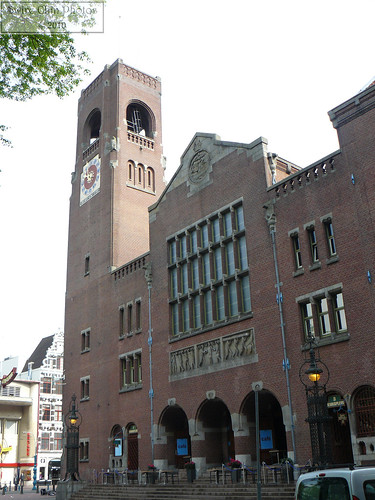I think one problem with the view of "traditional" architecture is that it clumps a lot of unrelated architecture movements under one big umbrella of traditional architecture.
Even though most of the architecture that is today considered traditional was not considered traditional when it was built. For example, the Amsterdam Commodities Exchange, and the Guaranty Building are both modernism.
 Canadian Pacific
Canadian Pacific
 amy.arch
amy.arch
And when many of the architectures that are considered traditional are completely opposed to one another.
For example, classical architecture and baroque architecture both use a similar visual vocabulary but they're completely opposed to each other. One is rational and universal and restrained. The other is highly emotional and subjective and personal and flamboyant. Baroque is to classical as Frank Ghery is to Mies van der Rohe. Totally unrelated and opposed, even though they use a similar visual vocabulary (glass and metal, or columns and cornices).
Architecture before modernism was diverse and constantly changing, just like it does today. Different groups of people had new ideas and every generation architecture would change and react and evolve.
In other words, there are no definitions of traditional architecture which both: understands and respects the architecture itself, and includes all the different architecture that you want to.
I think the same is also somewhat true for modernism as well. There are actually a bunch of different modernisms (purism, de stijle, chicago school, rationalism, prairie school, new brutalism, futurism, and too many more to list) and many of them are explicitly opposed to each other. I say "somewhat true" for modernism because I think that even though there are so many different and frequently opposing ideas, there are still some common ideas that can reasonably unite them under one definition. But "modernism" isn't a very useful term if we're to really understand what's been going on with architecture for the last 100-150 years.
The argument about money and practicality is really silly imo. The sydney opera house is bad because it costs extra money to figure out the engineering, but those cathedrals are great because they're obviously very cost effective, and totally weren't frequently collapsing and getting rebuilt during construction as they figured out the engineering, right? And the palace of versailles totally isn't an expensive ego project. And I'm sure that the tiny little non-designed wood framed buildings that normal people spent their entire lives living and working in were very cost effective, but I don't think that's the kind of architecture that you're talking about, lol